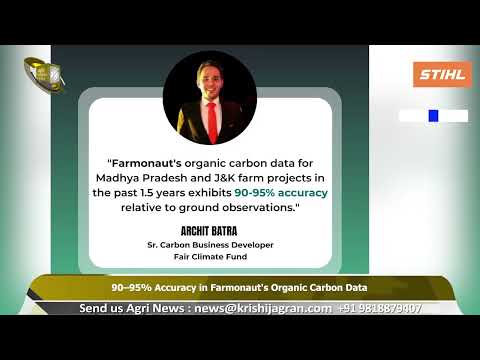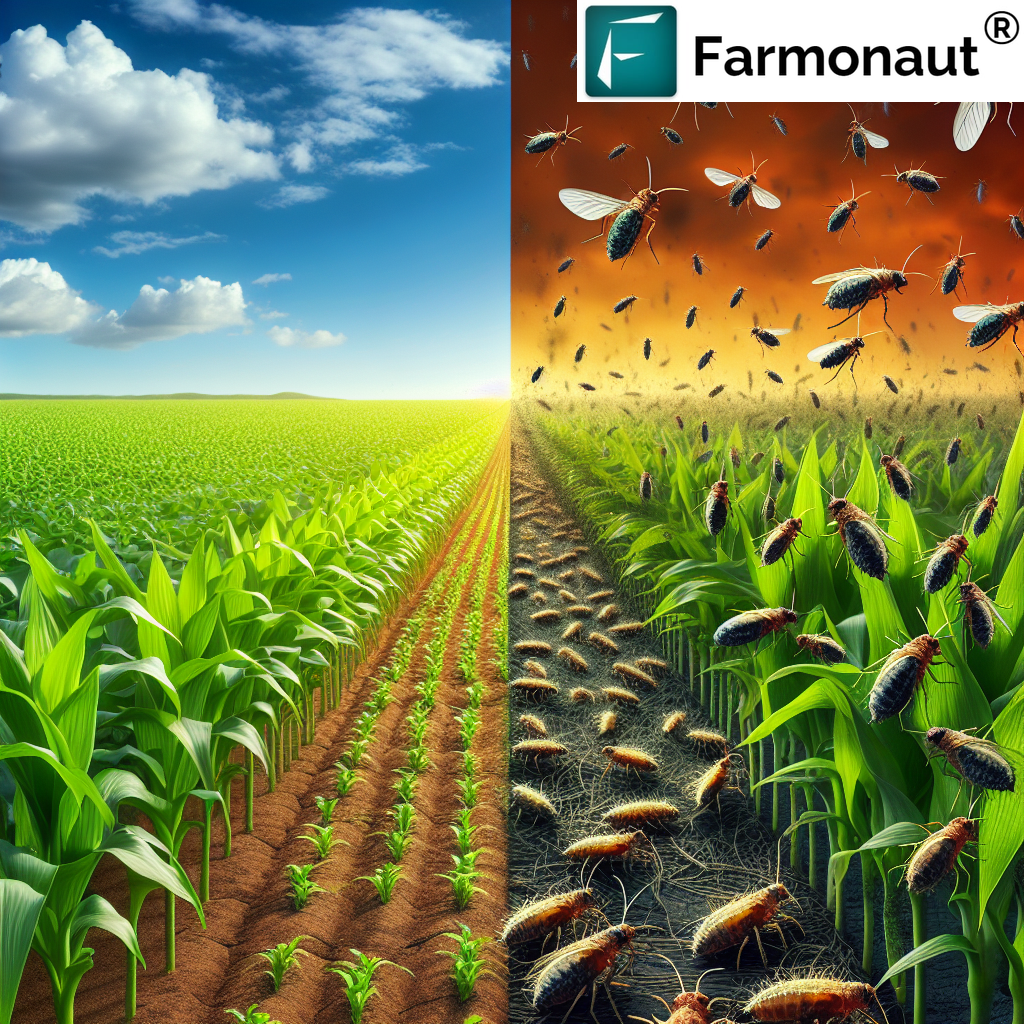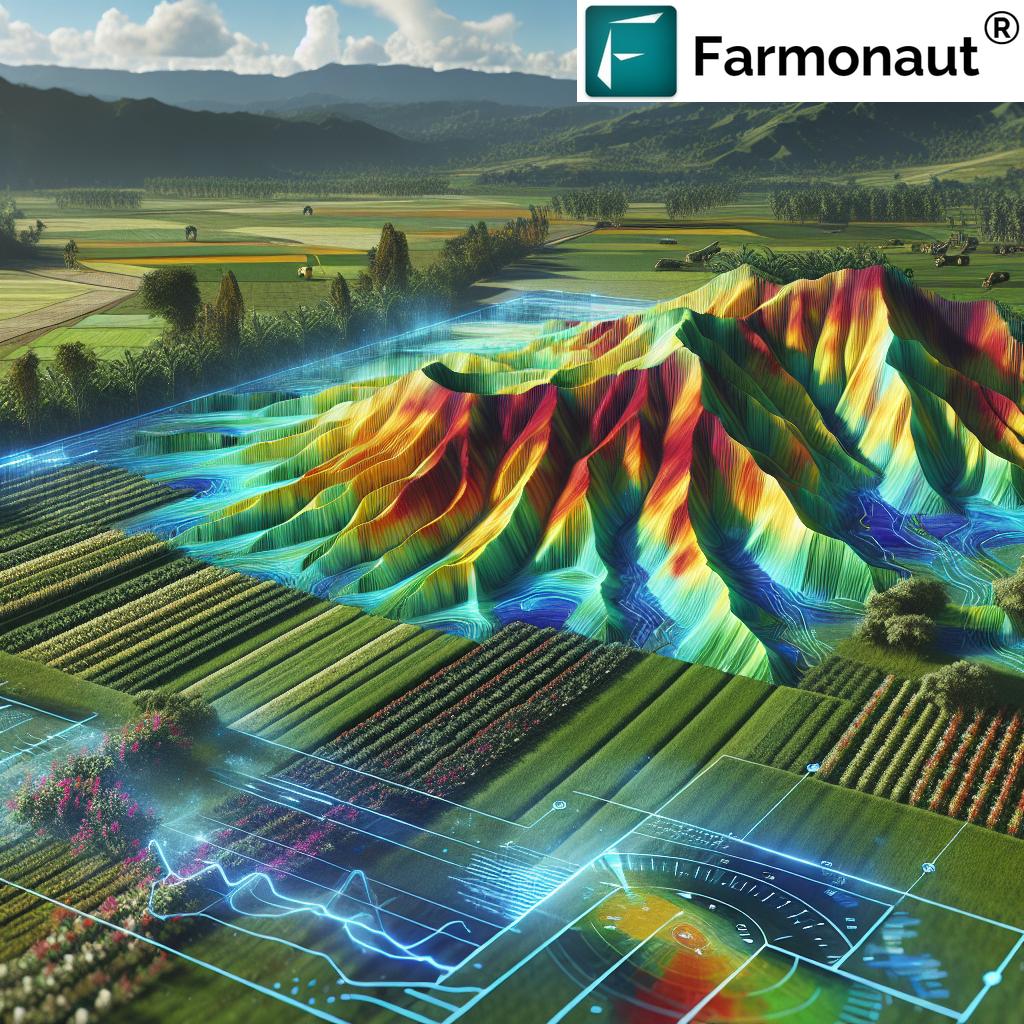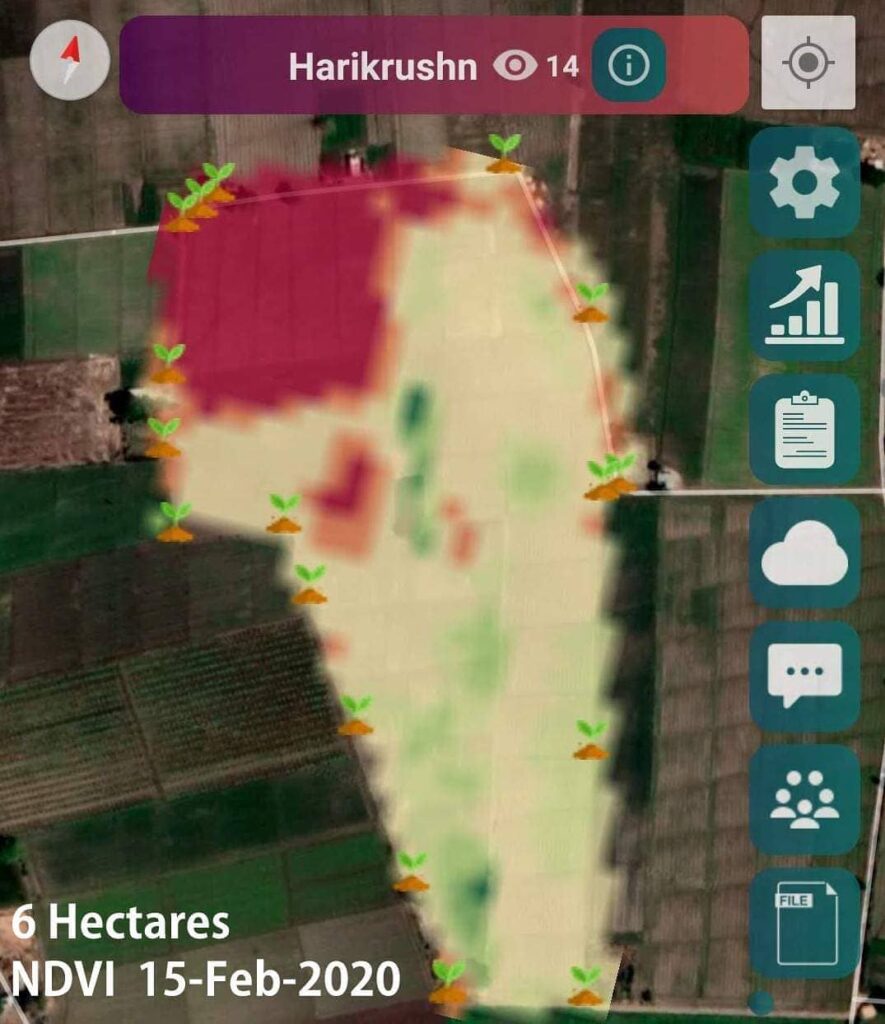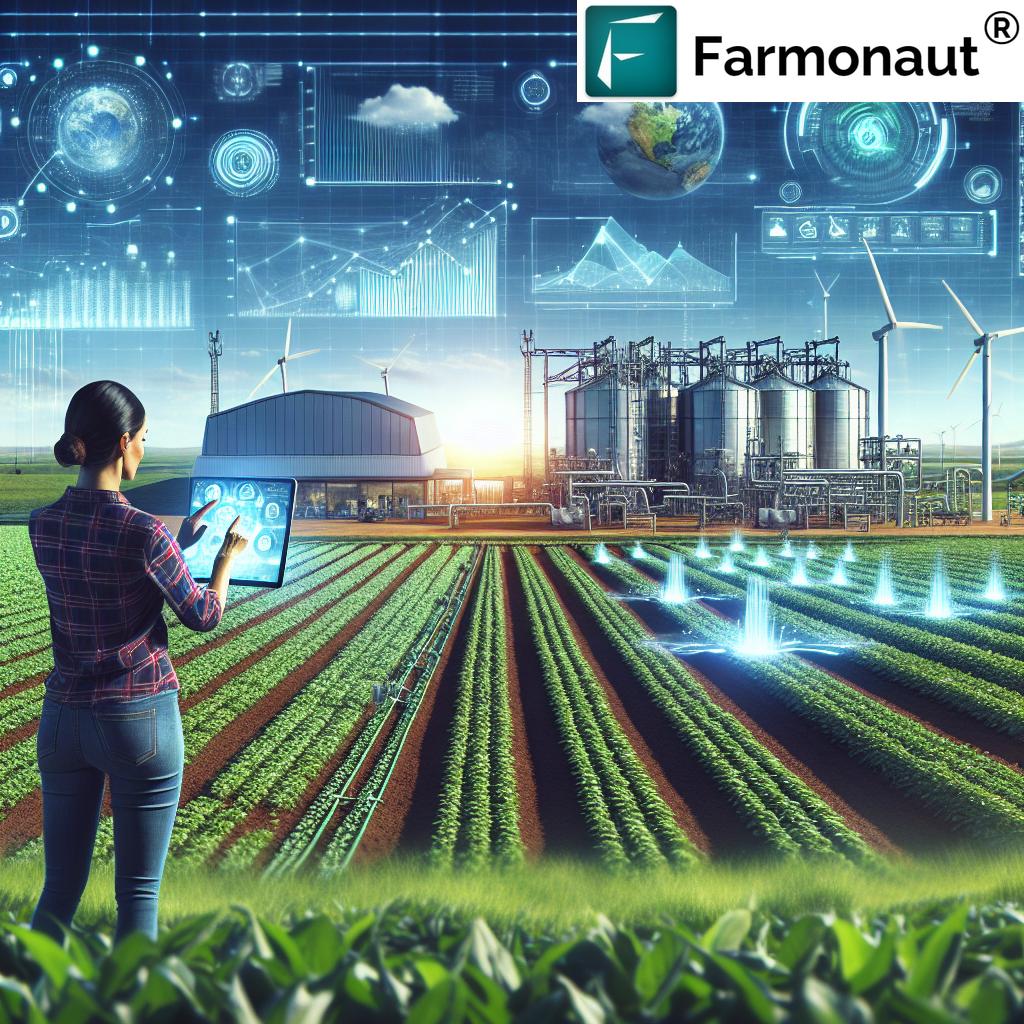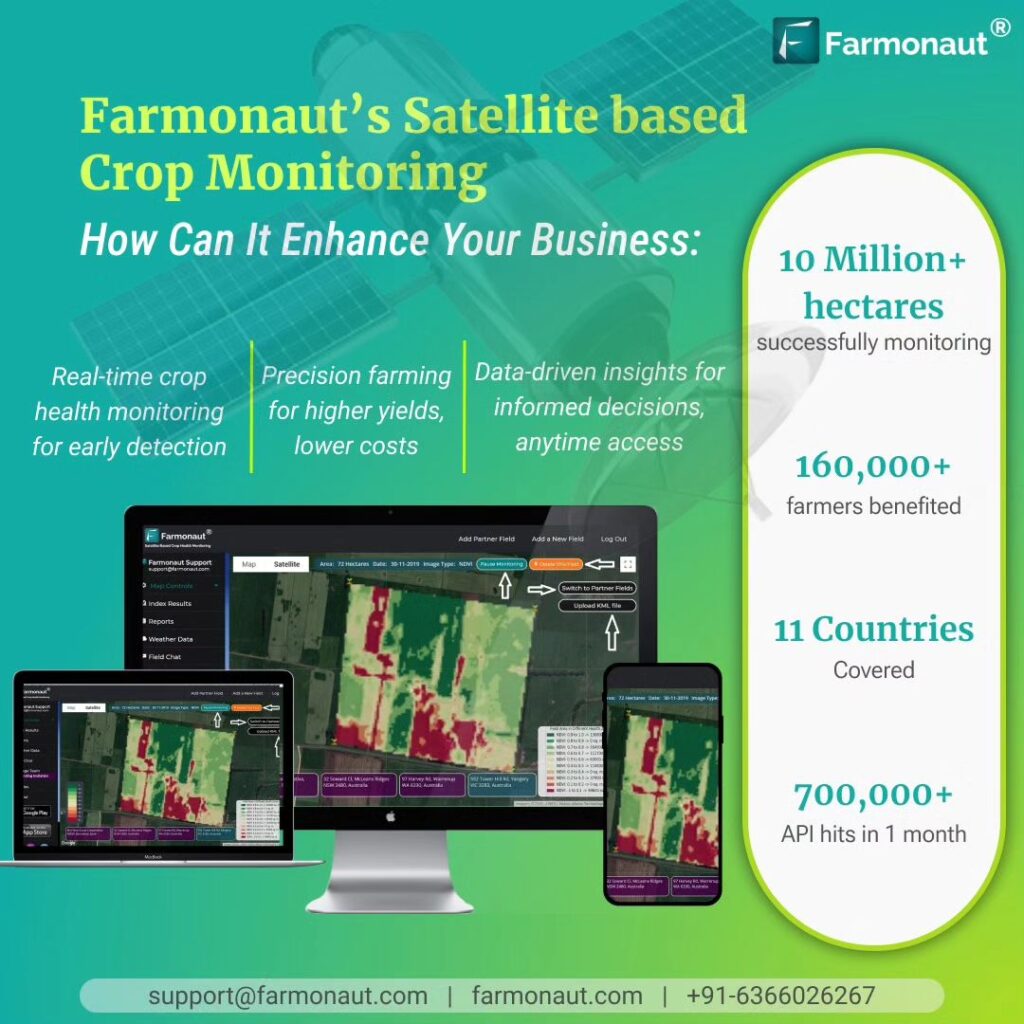Biosequestration in Agriculture: How Farmers Can Boost Soil Carbon and Earn Credits with Sustainable Practices
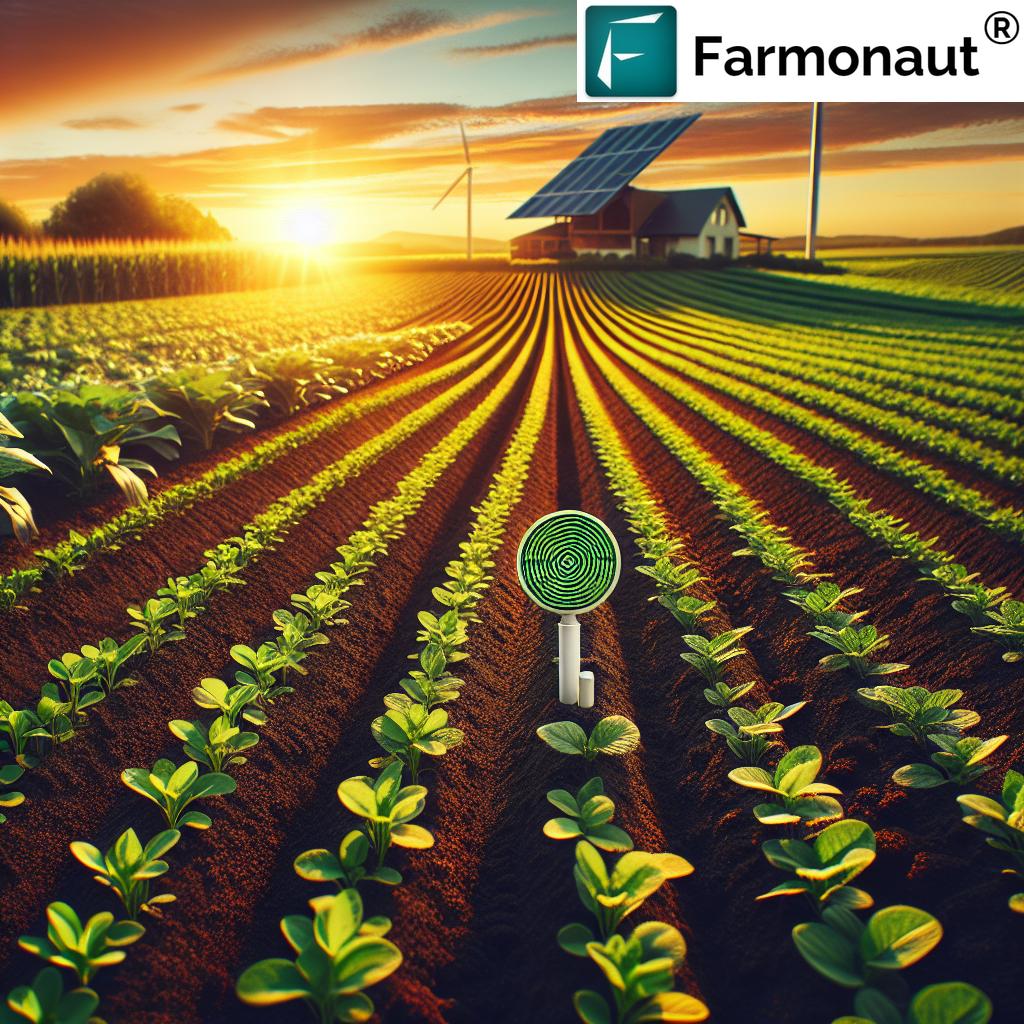
“Sustainable farming practices like cover cropping can increase soil organic carbon levels by up to 30% over 3-5 years.”
In the face of climate change and rising greenhouse gas emissions, the agricultural sector stands at a critical juncture. As we at Farmonaut explore innovative solutions to combat these global challenges, one approach has emerged as particularly promising: biosequestration in agriculture. This powerful strategy not only helps mitigate climate change but also offers farmers a unique opportunity to improve their soil health and potentially earn additional income through carbon credits.
In this comprehensive blog post, we’ll delve deep into the world of biosequestration, exploring how sustainable farming practices can boost soil carbon levels, reduce emissions, and contribute to a more resilient agricultural future. We’ll examine the science behind carbon sequestration techniques, discuss the economic potential of carbon credits for farmers, and highlight the role of precision agriculture in achieving these goals.
Understanding Biosequestration in Agriculture
Biosequestration is a natural process by which carbon dioxide (CO2) is removed from the atmosphere and stored in biological systems. In the context of agriculture, this primarily involves capturing and storing carbon in soil and plants. By enhancing this natural process, farmers can play a significant role in mitigating climate change while simultaneously improving their soil health and crop productivity.
The concept of agricultural carbon sinks is central to biosequestration. These sinks act as reservoirs that accumulate and store carbon-containing compounds for an indefinite period. In farming, the main carbon sinks are:
- Soil organic matter
- Plant biomass (both above and below ground)
- Long-lived agricultural products (e.g., wood from agroforestry systems)
By implementing sustainable farming practices that enhance these carbon sinks, farmers can effectively reduce the amount of CO2 and other greenhouse gases (GHGs) in the atmosphere, contributing to global efforts to combat climate change.
The Science Behind Carbon Sequestration in Soils
Soil organic carbon (SOC) is a crucial component of soil health and fertility. It consists of carbon-containing compounds derived from decomposed plant and animal matter. When managed properly, agricultural soils can act as significant carbon sinks, storing large amounts of carbon that would otherwise be released into the atmosphere as CO2.
The process of carbon sequestration in soils involves several key steps:
- Carbon fixation: Plants capture CO2 from the air through photosynthesis.
- Biomass production: The captured carbon is used to grow plant biomass.
- Carbon transfer: Some of this carbon is transferred to the soil through root exudates and plant litter.
- Decomposition: Soil microorganisms break down organic matter, releasing some carbon back to the atmosphere but also converting some into stable soil organic compounds.
- Stabilization: These organic compounds become part of the soil structure, potentially remaining stored for long periods.
The amount of carbon that can be sequestered in soil depends on various factors, including climate, soil type, vegetation, and land management practices. This is where sustainable farming practices come into play, as they can significantly enhance the soil’s capacity to store carbon.
Sustainable Farming Practices for Biosequestration
Implementing climate-smart agriculture techniques is key to boosting soil carbon levels and reducing greenhouse gas emissions from farming. Here are some of the most effective sustainable farming practices for biosequestration:
1. Cover Cropping
Cover crops are plants grown to cover the soil rather than for harvest. They offer numerous benefits for biosequestration:
- Increase soil organic matter
- Reduce soil erosion
- Improve soil structure and water retention
- Enhance nutrient cycling
By keeping the soil covered year-round, cover crops contribute to continuous carbon sequestration and protect existing soil carbon stocks.
2. Reduced Tillage or No-Till Farming
Conventional tillage disrupts soil structure and exposes organic matter to oxidation, releasing CO2. Reduced tillage or no-till practices help:
- Minimize soil disturbance
- Preserve soil organic matter
- Improve soil structure and water infiltration
- Reduce fuel consumption and associated emissions
3. Crop Rotation
Diversifying crops through rotation can significantly enhance soil health and carbon sequestration by:
- Improving soil structure
- Enhancing nutrient cycling
- Reducing pest and disease pressure
- Increasing biodiversity
4. Agroforestry
Integrating trees into agricultural systems offers powerful carbon sequestration potential:
- Trees store carbon in their biomass and roots
- Leaf litter contributes to soil organic matter
- Deep tree roots can access nutrients and water unavailable to crops
5. Organic Amendments
Adding organic materials such as compost, manure, or biochar to soil can:
- Directly increase soil organic carbon
- Improve soil structure and water retention
- Enhance nutrient availability for plants
Explore how Farmonaut’s satellite-based crop monitoring can help you implement these practices effectively. Try our web app or download our mobile apps:
The Economic Potential of Carbon Credits for Farmers
As the global community recognizes the urgent need to reduce greenhouse gas emissions, carbon markets have emerged as a mechanism to incentivize carbon sequestration efforts. For farmers, this presents an exciting opportunity to earn additional income through carbon credits while implementing sustainable practices.
Carbon credits are tradable certificates representing the right to emit one ton of CO2 or equivalent greenhouse gases. When farmers implement practices that sequester carbon or reduce emissions, they can potentially earn these credits and sell them to companies or organizations looking to offset their own emissions.
The process of earning carbon credits typically involves:
- Implementing verified carbon sequestration practices
- Measuring and documenting the amount of carbon sequestered
- Having the results verified by a third party
- Registering the credits with a carbon registry
- Selling the credits on carbon markets
While the carbon credit market is still evolving, it offers significant potential for farmers to monetize their sustainable practices. The value of carbon credits can vary depending on factors such as the type of project, the carbon market, and supply and demand dynamics.
Challenges in Measuring Carbon Sequestration
One of the key challenges in implementing carbon credit systems for agriculture is accurately measuring the amount of carbon sequestered. This is crucial for ensuring the integrity of carbon credits and building trust in the market. Some of the main challenges include:
- Variability in soil carbon levels across fields and over time
- The need for long-term monitoring to account for carbon storage permanence
- Distinguishing between natural carbon fluctuations and those resulting from management practices
- The cost and complexity of soil sampling and analysis
To address these challenges, innovative technologies and methodologies are being developed. These include:
- Remote sensing and satellite imagery for large-scale carbon stock estimation
- Soil spectroscopy for rapid, non-destructive soil carbon analysis
- Machine learning models for predicting soil carbon changes based on management practices and environmental factors
- Blockchain technology for transparent and secure carbon credit tracking
“Agricultural biosequestration has the potential to offset 5-15% of global annual greenhouse gas emissions through proper land management.”
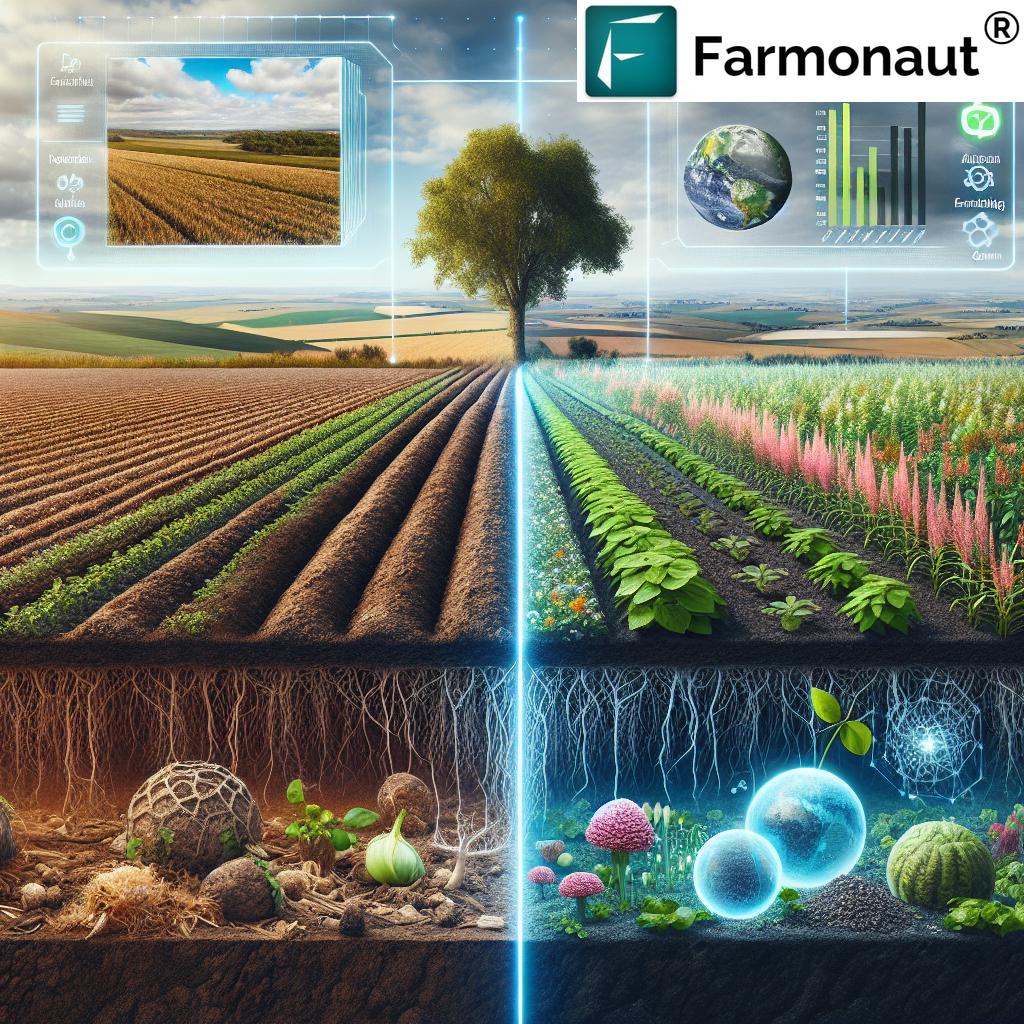
The Role of Precision Agriculture in Biosequestration
Precision agriculture plays a crucial role in enhancing biosequestration efforts and improving overall farm sustainability. By leveraging advanced technologies, farmers can optimize their practices to maximize carbon sequestration while improving crop yields and resource efficiency.
At Farmonaut, we’re at the forefront of providing innovative precision agriculture solutions that support sustainable farming practices. Our satellite-based crop monitoring system offers farmers valuable insights into their fields, helping them make data-driven decisions that promote both productivity and environmental stewardship.
Key aspects of precision agriculture that contribute to biosequestration include:
- Targeted application of inputs to reduce waste and emissions
- Variable rate technology for optimized fertilizer and water use
- GPS-guided machinery for minimal soil disturbance
- Real-time crop health monitoring for early problem detection
- Data-driven decision making for improved resource management
Discover how Farmonaut’s precision agriculture tools can help you implement sustainable practices and monitor your farm’s carbon footprint. Try our web app today!
Comparison of Carbon Sequestration Techniques
To provide a clear overview of the various biosequestration strategies available to farmers, we’ve compiled a comprehensive table comparing different sustainable farming practices:
| Farming Practice | Estimated Carbon Sequestration Rate (tons CO2e/hectare/year) | Soil Health Benefits | Potential Carbon Credit Value ($/hectare/year) | Implementation Challenges |
|---|---|---|---|---|
| Cover Cropping | 0.5 – 1.5 | Improved water retention, increased organic matter, erosion control | 15 – 45 | Seed costs, timing of planting and termination |
| Reduced Tillage | 0.3 – 1.0 | Enhanced soil structure, reduced erosion, improved water infiltration | 10 – 30 | Initial equipment investment, potential yield reductions in early years |
| Agroforestry | 2.0 – 5.0 | Increased biodiversity, improved nutrient cycling, enhanced soil stability | 60 – 150 | Long-term investment, complex management, potential crop competition |
| Crop Rotation | 0.2 – 0.8 | Improved soil structure, enhanced nutrient availability, pest control | 6 – 24 | Market demand for diverse crops, management complexity |
| Organic Amendments | 0.5 – 2.0 | Increased organic matter, improved soil structure, enhanced nutrient availability | 15 – 60 | Sourcing quality amendments, application costs |
Note: The values in this table are estimates and can vary significantly based on local conditions, climate, and specific implementation practices. Carbon credit values are also subject to market fluctuations.
The Future of Biosequestration in Agriculture
As we look to the future, the role of biosequestration in agriculture is set to become increasingly important in our global efforts to mitigate climate change. Several key trends and developments are shaping this future:
- Technological Advancements: Continued improvements in remote sensing, AI, and data analytics will enhance our ability to measure and monitor carbon sequestration accurately.
- Policy Support: Governments worldwide are recognizing the potential of agricultural carbon sequestration and implementing policies to incentivize sustainable farming practices.
- Market Development: The carbon credit market for agriculture is expected to mature, providing more reliable income streams for farmers implementing sequestration practices.
- Research and Innovation: Ongoing research into soil biology, plant breeding, and agricultural systems will likely uncover new strategies to enhance carbon sequestration potential.
- Integration with Sustainable Development Goals (SDGs): Biosequestration in agriculture aligns with multiple SDGs, including climate action, life on land, and zero hunger, driving further investment and focus in this area.
At Farmonaut, we’re committed to staying at the forefront of these developments, continuously improving our platform to support farmers in their sustainability efforts. Our AI-driven advisory system, Jeevn AI, is designed to evolve with the latest research and data, providing farmers with cutting-edge insights for optimizing their carbon sequestration practices.
Conclusion: Empowering Farmers for a Sustainable Future
Biosequestration in agriculture represents a powerful tool in our collective efforts to combat climate change. By implementing sustainable farming practices, farmers can not only contribute to reducing greenhouse gas emissions but also improve their soil health, increase crop resilience, and potentially earn additional income through carbon credits.
The journey towards widespread adoption of biosequestration practices in agriculture will require continued collaboration between farmers, researchers, policymakers, and technology providers. At Farmonaut, we’re proud to play our part in this crucial endeavor, offering innovative solutions that make precision agriculture and sustainable farming practices more accessible and effective for farmers worldwide.
As we move forward, the integration of advanced technologies like satellite monitoring, AI-driven analytics, and blockchain-based traceability will be key to unlocking the full potential of agricultural biosequestration. These tools not only enhance our ability to implement and measure carbon sequestration efforts but also provide the transparency and accountability necessary for robust carbon credit systems.
We encourage farmers, agribusinesses, and environmental stakeholders to explore the possibilities of biosequestration and leverage the power of precision agriculture in their sustainability efforts. Together, we can cultivate a more resilient, productive, and environmentally friendly agricultural sector that plays a pivotal role in addressing the global climate challenge.
Ready to start your journey towards sustainable farming and carbon sequestration? Explore Farmonaut’s comprehensive suite of tools and services:
For developers interested in integrating our satellite and weather data into their own applications, check out our API and API Developer Docs.
Frequently Asked Questions (FAQ)
- What is biosequestration in agriculture?
Biosequestration in agriculture refers to the process of capturing and storing atmospheric carbon dioxide in soil and plants through sustainable farming practices, helping to mitigate climate change and improve soil health. - How can farmers earn carbon credits through biosequestration?
Farmers can earn carbon credits by implementing verified carbon sequestration practices, measuring and documenting the amount of carbon sequestered, having the results verified by a third party, and selling the credits on carbon markets. - What are some effective carbon sequestration techniques in farming?
Effective techniques include cover cropping, reduced tillage or no-till farming, crop rotation, agroforestry, and the use of organic amendments like compost or biochar. - How does precision agriculture contribute to biosequestration?
Precision agriculture enhances biosequestration by optimizing resource use, minimizing soil disturbance, and enabling data-driven decision making for improved farm management and carbon sequestration. - What challenges exist in measuring agricultural carbon sequestration?
Challenges include variability in soil carbon levels, the need for long-term monitoring, distinguishing natural carbon fluctuations from those resulting from management practices, and the cost and complexity of soil sampling and analysis. - How can Farmonaut help farmers implement biosequestration practices?
Farmonaut provides satellite-based crop monitoring, AI-driven advisory systems, and precision agriculture tools that help farmers implement and optimize sustainable practices, monitor crop health, and make data-driven decisions to enhance carbon sequestration efforts.





